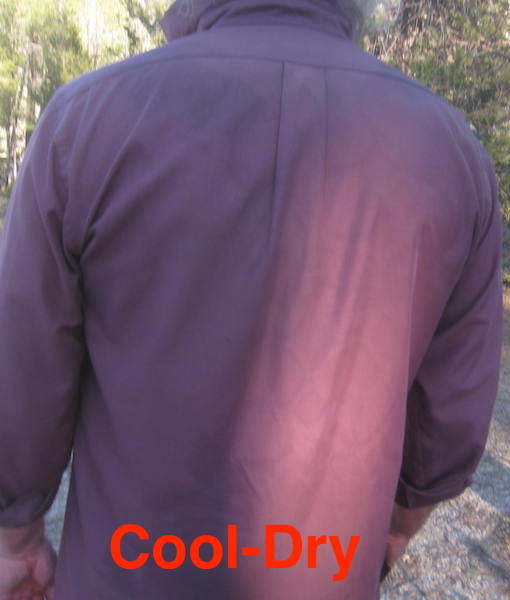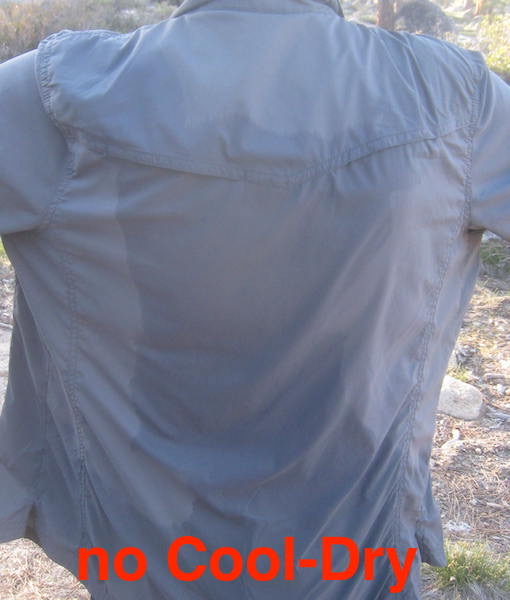

 |
 |
 |
Guest - Not logged in | |||
Reviews > Packs > Pack Accessories > Vaucluse Gear Pack Frame > Test Report by joe schafferVaucluse
Gear Cool-Dry Pack
Frame
Test Report by Joe Schaffer
INITIAL REPORT - March 7, 2022 FIELD REPORT - April 9, 2022 LONG TERM REPORT - May 30, 2022
REVIEWER
INFORMATION:
Received:
3/3/22 My
Description:
The assembly
attaches to the pack via two 'loops' at the top which go over the
pack's shoulder straps at the top of the pack. Attachment happens
either by undoing the loop anchors (which my fingers don't seem to be
able to manage); or the pack's shoulder straps, feeding each through
one loop. Vendor's product video shows loops on each layer; product
arrived with loops on one layer. The other layer does have
accommodation for loop attachment. The unit came fully assembled and with four extra spacers, deftly packaged in a custom cardboard box.
Other points
of observation
will include how well the construction manages to remain in its
original configuration. All photos on the website show the product
with day packs, presumably never more than about 20 lb (9 kg). As a
backpacker I'll be squishing it under loads typically nearly twice
that, and hopefully even a bit more if I can wrangle some longer
gambits this year as I
did last season. Will
be interesting to note how the product's attachment behaves in the
process of getting a heavy backpack
mounted. I like to move camp nearly every day, an effort generally
exhausting any energy reserves that might otherwise encourage day
hiking. Field Conditions: Impressions: The device attached easily to a Medium Gregory Palisade 80. I wouldn't want to have to muster the dexterity to unhook and re-hook the attaching loops on a cold day or in low light--the two fasteners are very small and require precise fitting. The frame is about an inch (2.5 cm) longer than would be perfect, as it overhangs the lumbar pad in the hip belt. This was no issue, though, on this hike's very light load. With no stabilizer at the bottom, the frame went cattywampus as I slid the backpack into place. Again, no issue with a light load as it's not that hard to get the frame re-situated before buckling up. Once the pack was all strapped, there's no movement in the frame--it stays put. The pack also stayed put--no wobbling around. If in heavier us At first it felt quite different from what I'm used to, which is a fairly smooth backboard. After 15 minutes or so I wouldn't be able to say it's any better or worse for how it feels on the back. Nothing pinched or poked. Pressure seemed evenly displaced. The difference in heat buildup became evident almost immediately, though. My back was not getting hot as it otherwise would, and it stayed much more comfortable than I would have expected. On any day in an hour I'd have a damp shirt under the pack. For today's test I wore a cotton tee, thinking that to be the most rigorous testing of the device's ability to keep things dry. The picture shows the outline of the frame, where the shirt is wet in contact with the frame and dry everywhere else. I would have to rate this as impressive short-hike performance in keeping the shirt dry. Field Conditions: 2) May 3-8, 2022: Stanislaus National Forest, California, USA. 47 lb lv wt (21 kg), 11 mi (18 km) mostly trail; 4 nights, 2 camps; 5,900-7,000 ft (1,800-2,100 m); hiking temps 35-74 F (2-23 C), warm & sunny to gusty snow showers. Impressions: Test 1 day-hiked weight about 20 lb (9 kg) lighter than a usual trip load. Hike 2 tallied about a dozen lb (5 kg) heavier due to its being a relatively short, easy trek suitable for  putting the
wear and tear on h putting the
wear and tear on h eavier gear. eavier gear.Hiking temps started off at the warmest of the trip and a light breeze. I got to our first site at four mi (6.5 k) with an unexpectedly very dry shirt, and most notably, a dry back. I could actually feel the cooling air wafting through the space between my back and the pack. Though many variables may make the comparison unworthy of much note, I (purple) was dry and my partner's (blue) shirt back was wet. My conclusion is that the Vaucluse insert definitely keeps things drier and cooler. On these points I rate the Cool-Dry insert at 100%. Routinely not carrying so much weight, it may not be fair to say that I found the insert somewhat less comfortable than with a lighter load or with no insert. On the level and downhill I could abide the 'rough' feel of the device. On uphill strains a certain point of the device poked a middle vertebra enough to become mildly vexing. Had the annoyance not been alleviated by frequent variations in declivity I would have found it necessary to surrender to it and remove the device. I was also mildly perturbed at finding a pill in my polyester shirt, the first to develop in a dozen or so outings. Yes, polyester pills readily and since the shirt isn't new, perhaps it would have anyway. I didn't feel any loss of pack stability with the Cool-Dry insert. As I began to tire, though, I felt gravity's greater tug with the load being pushed farther outboard. I felt less stable, and more so as the miles wore on. Those moments of having to step high to get over a log or grunt out a longer stride over a streamlet were met with some discomfiture as the weight wanted to topple me off balance. Part of that would be due to less experience carrying so much tonnage, but however much that weight is the issue, the device does leverage it. Maybe eventually muscle memory would develop to compensate, or maybe it was all in my head, but balance in critical moments seemed more uncertain with the device in place. The hike out was so cold and blustery that I did not want any cooling effect. Without the Cool-Dry insert and in finger-stinging chill, my shirt back was wet when I got to the car. Quite a difference from starting the trip in temps about 40 degrees higher (22 C) and arriving in camp dry. Even with the overweight load I did not have difficulty mounting the pack. Cool-Dry did slide out of place, and without any trouble I was able to get it properly situated. I don't know how much strain the attaching loops may have been forced to endure in the procedure, but there remains no sign of injury to them. Quick
Shots: Read more reviews of Vascluse Gear gear Read more gear reviews by joe schaffer Reviews > Packs > Pack Accessories > Vaucluse Gear Pack Frame > Test Report by joe schaffer | ||||